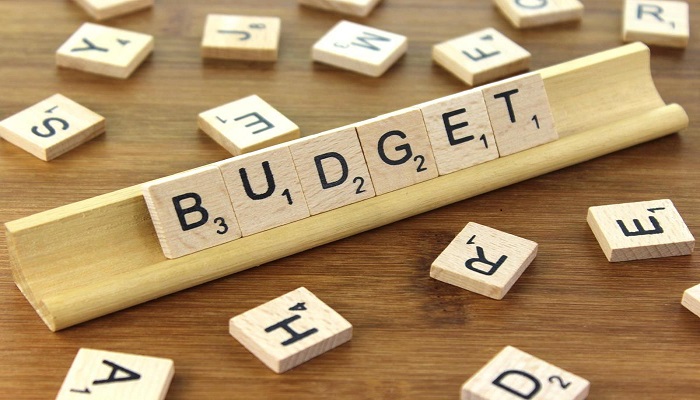
Union Budget | Modi govt adheres firmly to fiscal discipline agenda
“The fiscal consolidation path announced by me in 2021 has served our economy very well, and we aim to reach a deficit below 4.5 per cent next year,” said FM

Buoyed by improvement in revenue collection, the Union government has lowered fiscal deficit target to 4.9 per cent of GDP for the current financial year as against 5.1 per cent estimated in February's Interim Budget.
Finance Minister Nirmala Sitharaman, however, retained the fiscal deficit estimate at 4.5 per cent of GDP for 2025-26, as announced in February.
“For the year 2024-25, the total receipts other than borrowings and the total expenditure are estimated at Rs 32.07 lakh crore and Rs 48.21 lakh crore, respectively. The net tax receipts are estimated at Rs 25.83 lakh crore. The fiscal deficit is estimated at 4.9 per cent of GDP,” she said, while presenting the Budget in Lok Sabha.
Absolute terms
In absolute terms, the fiscal deficit has accordingly came down to Rs 16.14 lakh crore against Rs 16.85 lakh crore estimated earlier for the current financial year.
“The fiscal consolidation path announced by me in 2021 has served our economy very well, and we aim to reach a deficit below 4.5 per cent next year. The government is committed to staying the course.”
“From 2026-27 onwards, our endeavour will be to keep the fiscal deficit each year such that the central government debt will be on a declining path as a percentage of GDP,” Sitharaman said.
Market borrowing target down
The government has also cut down its gross market borrowing target by about Rs 12,000 crore to meet the fiscal deficit, the gap between revenue receipt and expenditure.
The gross market borrowings has now revised downward to Rs 14.01 lakh crore from Rs 14.13 lakh crore estimated in February.
“The gross and net market borrowings through dated securities during 2024-25 are estimated at Rs 14.01 lakh crore and Rs 11.63 lakh crore, respectively. Both will be less than that in 2023-24,” the Finance Minister said.
Gross borrowing was Rs 15.43 lakh crore, the highest ever, in 2023-24.
Current account deficit down
Current account deficit (CAD) narrowed sequentially to $10.5 billion in the quarter ended December 2023 (Q3 FY24) — 1.2 per cent of gross domestic product (GDP) — from $11.4 billion in Q2 FY24 (1.3 per cent of GDP).
The current account deficit, or CAD, which is the difference between a country's exports and imports of both goods and services, stood at $16.8 billion or 2% of GDP in the year-ago quarter.
Reserve Bank of India (RBI) data showed that the rise in net services receipts more than compensated for a slight rise in merchandise trade deficit in Q3 FY24. This helped cushion the CAD. Services exports grew by 5.2 per cent year-on-year (Y-o-Y) on the back of rising exports of software, business and travel services.
Balance of payments healthy
As per Reserve Bank of India (RBI) data, India’s current account registered a surplus in the fourth quarter (Jan-Mar) of the fiscal year 2023-24. This was the first surplus in 11 quarters.
In the fourth quarter, the balance of payments (BoP) recorded a surplus of $30.8 billion, pushing full year BoP surplus to $64 billion, compared to a deficit of $9 billion in the 2023 financial year.
The data released recently showed that India's current account balance recorded a surplus of $5.7 billion in the January-March quarter, compared to a deficit of $8.7 billion in the October-December quarter and $1.3 billion in the year ago quarter.
This achievement underscores the significance of India’s Balance of Payments (BoP), highlighting
its impact on currency exchange rates, sovereign ratings, and overall economic health. The BoP serves as a crucial economic indicator, detailing all financial transactions between India and the rest of the world.
High food inflation
Headline retail inflation has remained over 5 per cent for eight months in the last one year. It has largely been attributed to high food prices, especially of vegetables, pulses and cereals, which has kept the headline retail inflation sticky. Food items contribute 46 per cent to the consumer price index basket. However, retail core inflation — the non-food and non-fuel segment — moderated to a four-year low of 4.3 per cent in FY24.
To manage inflation, the Union Government undertook “prompt measures such as open market sales, retailing in specified outlets, timely imports, reduced the prices of LPG cylinders and implemented a cut in petrol and diesel prices”, said the Economic Survey. “The RBI raised policy rates by a cumulative 250 bps between May 2022 and February 2023 and also managed liquidity levels efficiently. Even as higher policy rates are transmitted through the system, the RBI continues to support growth with adequate liquidity, thereby ensuring that inflation is headed to the target of 4 per cent on a durable basis,” it said.
Enhanced capital expenditure
The government will provide Rs 11.11 lakh crore towards capital expenditure for 2024-25 and will introduce viability gap funding to spur private investment in infrastructure, Finance Minister Nirmala Sitharaman said on Tuesday.
“This year, I have provided Rs 11,11,111 crore for capital expenditure. This would be 3.4 per cent of our GDP,” Sitharaman said.
The minister said the Union government will encourage states to provide support of similar scale for infrastructure, subject to their development priorities. “A provision of Rs 1.5 lakh crore for long-term interest-free loans has been made this year also to support the states in their resource allocation,” she said.
Post-COVID-19, the Budget has been laying special emphasis on capex. It has kick-started a dormant cycle for the economy.
During 2020-21, the government earmarked Rs 4.39 lakh crore which increased by 35 per cent to Rs 5.54 lakh crore in the subsequent year.
Another 35 per cent hike in capex was done in 2022-23 to Rs 7.5 lakh crore which subsequently reached a high of Rs 10 lakh crore, an increase of 37.4 per cent.

